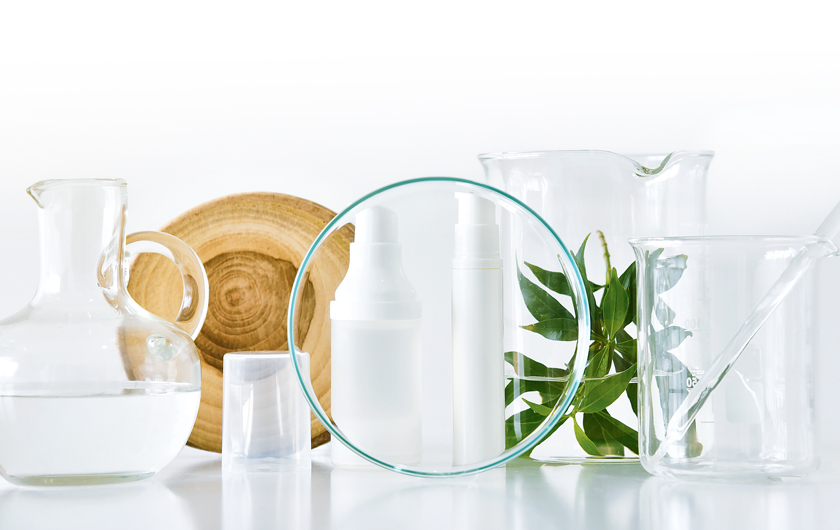From over-the-counter remedies to laser treatments, there are ways to turn back the clock
By Lola Augustine Brown
Two factors come into play in affecting how old your skin appears: genetics and sun damage.
“The less pigmentation you have in your skin, the more you’re going to bear the brunt of chronic low-grade sun damage,” says Calgary dermatologist Dr. Kenneth W. Alanen. “The best antiaging product you could ever use is a good zinc oxide-based sunscreen, but the more pigmentation you are born with, the better you’re going to do.”
These days, we all know the importance of sun protection. If you’re 60-plus, however, you may have spent your youth without any kind of sunscreen, says Toronto dermatologist Dr. Martie S. Gidon, so you’ll likely have more sun damage than other age groups. “If you began using sunscreen when it became widely available in the 1970s, the sun damage will be less extensive,” Gidon says. If so, good for you, but there’s a fair-sized contingent of us who were still slathering on oil in pursuit of a deep tan and who now are dealing with sun-damaged skin, which presents itself in the form of fine lines, discolouration, and sometimes even skin cancers. Thankfully, with some help from a dermatologist, all of those concerns can be addressed—and on a cosmetic level, when you address the sun damage, you’re somewhat able to turn back the clock on your skin.
How to Help Yourself
“The first step in treating sun damage is sun protection: using a broad-spectrum sunscreen with SPF 30+ daily, wearing a hat, and seeking shade,” Gidon says. Your skin can still become damaged on cloudy days and in the winter, so there’s no day on which you shouldn’t have sunscreen on (thankfully many moisturizers and foundations have it included these days, making it even easier to protect ourselves). Alanen reiterates that using a zinc oxide-based sunscreen is the only way you’ll be properly protected.
A retinol cream does all kinds of great things for your skin, including encouraging the production of collagen, something aging skin lacks. (Retinol is a natural form of vitamin A.) Similarly, “Tretinoin cream [a synthetic version of vitamin A] helps reverse sun damage, stimulate collagen, smooth skin, and fade brown spots. Glycolic acid products have similar benefits, but in general are milder and so can be used if someone doesn’t tolerate the other options,” Gidon says. “I also like azelaic acid and niacinamide to help reverse sun damage.”
Serums plump our skin and boost the uptake of antioxidants. “This will help neutralize free radicals caused by ultraviolet radiation from the sun,” Gidon says. If you’ve never used a serum before, prepare to be pleasantly surprised at the instant hydrating effect. “Sunscreen, retinol, and hydrating serum are the holy trinity in our clinic,” says Alanen, advising that you talk to your dermatologist to find the right treatments for your skin rather than drowning in choice at your local drugstore (and perhaps spending money on less-effective products).
What’s key is consistent care and attention in your at-home beauty regime. You’ll likely see some improvement as soon as you start slathering on a serum and using a retinol cream, but the full results will likely take a couple of weeks to kick in.
Professional Treatments
Seeking help from a dermatologist opens you up to solutions that can reverse many of the effects of sun damage, provided you want to spend a little cash on treatments.
Resurfacing lasers can make a huge difference to sun-damaged skin, diminishing age spots, making pores less noticeable, and erasing fine lines. However, “the more extensive the sun damage, the more aggressive the laser treatment needs to be to have an effective result,” Gidon says. “The result can be remarkable, but there can be seven to 10 days of downtime.”
An important thing to note is that laser treatments are best left to a qualified dermatologist.
“During the healing phase, it is very uncomfortable. By necessity, we need to break that epidermal barrier,” Alanen says. “That means your skin will be raw, weepy, and sometimes bleeding; healing means a new layer of skin. You’re not going back to work the next day, and any clinic that promises that is not going to give you the results you want.”
There are, however, certain things that can be addressed with minimal downtime, such as pigmentation spots and small broken capillaries—it’s generally only a full resurfacing that requires more downtime. As for cost, for a full resurfacing, you can expect to pay a couple of thousand dollars, Alanen says.
As an alternative to laser treatments, chemical peels and microdermabrasion can be used as maintenance treatments and require little downtime, Gidon says. These cost less and can still give very noticeable results.
If deep lines are your major skin concern, your dermatologist may recommend using Botox and fillers such as Restylane as part of a package to make your skin look more youthful. These treatments will fill loose skin, plumping it up and making it look tighter and less saggy, and almost erase deep lines. If you have money to spend, you really can make a huge difference to the appearance of your skin.
“In practical terms, the average face needs about $500 of Botox two or three times a year,” Alanen says. “Juvederm [an injectable dermal filler] can last up to two years, and that will likely cost you $1,000 to $2,000 a time.”
With all this in mind, it’s clearly quite possible to reverse the sun damage we’ve accrued over the years—and to avoid more damage in the future.
Photo: iStock/yakobchuk.





